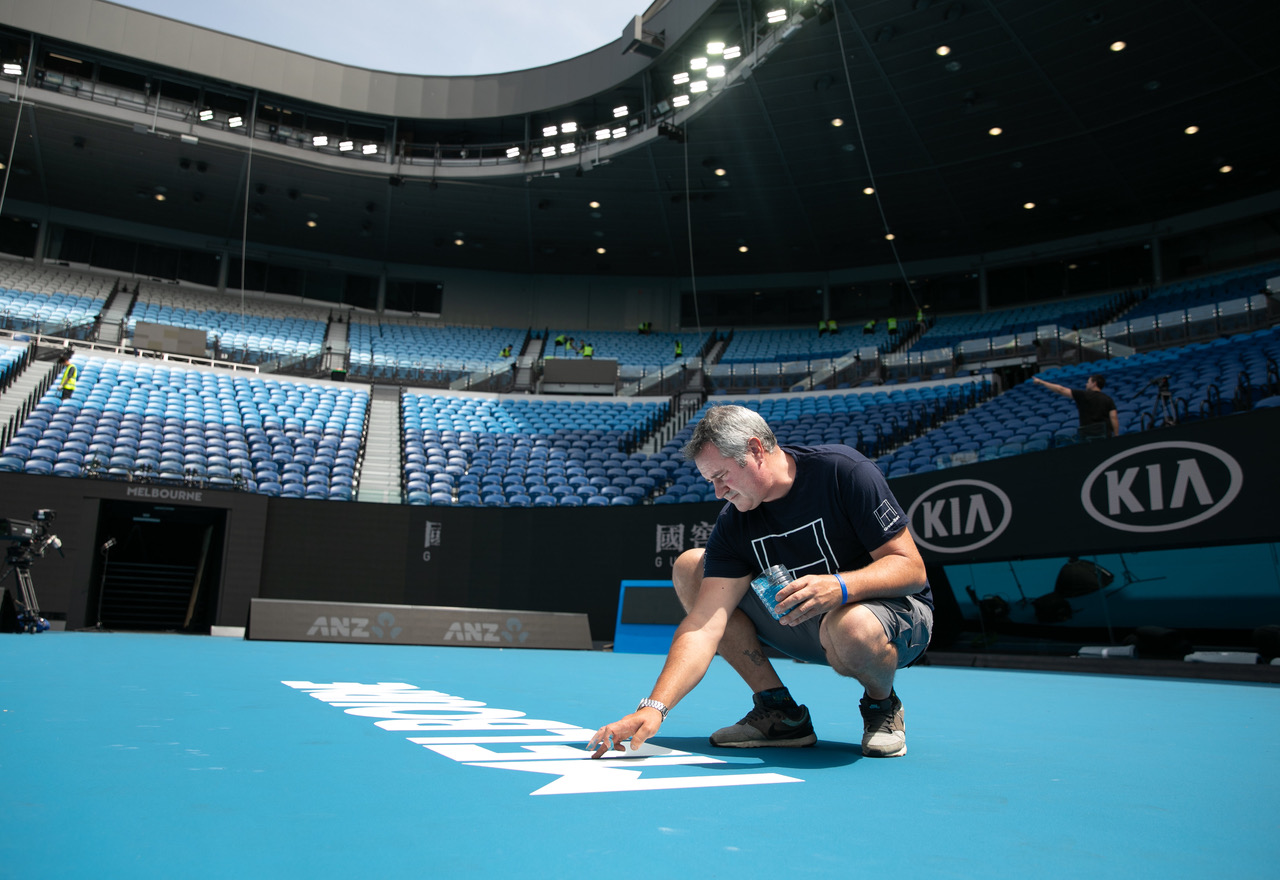
Australian Open: Will the bushfires affect season's first grand slam?
With the air pollution soaring in the country, smoky conditions could pose a threat to the health of the players, fans, and officials of the Australian Open, especially when the temperature further rises in summer.

The season’s first Grand Slam, Australian Open, is about to kick off from January 20 amidst the country’s raging bushfire crisis which has already left at least 26 people dead and destroyed more than 2,000 homes, forcing mass evacuations.
With the blazes across the country torching about eight million hectares (80,000 square kilometres) of land, air pollution has touched an all-time high.
Though the new men’s event ATP Cup went as scheduled without any lags, there could be major implications of this crisis on this month’s tennis tournament.
AFP Sport looks at some of these factors which could cause a hindrance in the season’s first major competition.
The risk factor
With the air pollution soaring in the country, smoky conditions could pose a threat to the health of the players, fans, and officials of the Australian Open, especially when the temperature further rises in summer.
Though the major venue Melbourne hasn’t been affected much by pollution, cities such as Sydney and the capital Canberra were very often witnessing an orange sky even in the early afternoons.
Also read: From T20 World Cup to Tokyo Olympics, 2020 packs a punch for all
However, last week’s thick haze cover over Melbourne prompted that the tennis tournament could be delayed but Tennis Australia CEO Craig Tiley cleared the doubt-filled air by saying the tournament should go ahead as expected.
“All the information we have at the moment, with qualifying coming up next week, is that the forecast is good, we don’t expect any delays and we’ve implemented additional measures to ensure the Australian Open will be able to run as scheduled,” Tiley said as reported by AFP Sport.
Worst case scenario
Fires are still burning in Victoria, where Melbourne is the state capital and could continue throughout the tournament, with huge blazes to the host city’s east.
“It is going to depend on the prevailing winds and whether we have ongoing fires,” Christine Jenkins, professor of respiratory medicine at the University of New South Wales in Sydney, told AFP.
“It’s still an open question just whether or not we could still have further periods of intense pollution.”
Also read: Former world No. 1 Wozniacki to retire after Australian Open
Jenkins said that so far, Melbourne hasn’t seen pollution bad enough to postpone the tournament.
“(But) there is very definitely the threat of fire that could cause significant air pollution in Melbourne if things get worse at any point,” she said.
Risks on health
Players who are recovering from respiratory tract infections are particularly at risk, as well as those with asthma.
Pollution can irritate the respiratory tract, intensifying and prolonging symptoms — but the health dangers don’t stop there.
“It (pollution) increases the risks of respiratory symptoms, cardiovascular disorder, eye symptoms, or mental disorders,” warned Professor Yuming Guo, head of the Climate, Air Quality Research Unit at the School of Public Health and Preventive Medicine at Monash University in Melbourne.
“All these would influence of the performance of the players.” Players and fans should stay hydrated, avoid alcohol and limit their time outside, Jenkins said.
Special arrangements for players
Meteorological and air-quality experts will be on-site to monitor conditions. Any smoke hazards will be treated in a similar way to extreme heat and rain, with umpires able to stop play if air monitoring shows it is too dangerous to continue.
Melbourne Park, the venue for the Australian Open, has three roofed stadiums and eight other indoor courts. While facemasks are impractical for players, Jenkins advised them to stay hydrated and get plenty of rest.
Also read: Andy Murray to make Grand Slam return at 2020 Australian Open
“Staying well-hydrated keeps the respiratory membranes well moistened and less prone to irritative symptoms,” she said.
“Avoiding alcohol, getting plenty of rest, sleeping normal hours and not being outdoors any more than you need to be. Difficult for players, because they’re on practice courts and they’re constantly trying to keep their (practice) hours up.”
Effects of haze on other events
Last month’s SOLAS Big Boat Challenge in Sydney was cancelled after thick smoke from bushfires sent visibility plunging on Sydney Harbour. A Big Bash cricket match in Canberra was also scrapped because of poor air quality and visibility.
But most sports fixtures have gone ahead. Australia played cricket Test matches against New Zealand in Melbourne and Sydney. And the 10-day ATP Cup tennis tournament has proceeded in Sydney, Brisbane, and Perth without serious problems.
Chances of Australian Open being cancelled
Highly unlikely.
Even if air pollution soars, organisers would be reluctant to axe what is perhaps Australia’s biggest sports event of the year, and one of only four Grand Slam tournaments on the tennis calendar.
According to The Australian newspaper, they will be well covered if they do: an insurance policy will provide a hefty pay-out stretching into nine figures in the event of a cancellation due to extreme weather.
However, at least one health expert would support delaying or axing the tournament altogether if air quality remains low.
“If the air pollution is still serious, it would be better to postpone or cancel it,” said Guo.
“People, when playing or exercising, are more affected by air pollution because they inhale deeply forcing air into their lower respiratory system where air pollutants accumulate with prolonged exposure.”
(With inputs from agencies)

